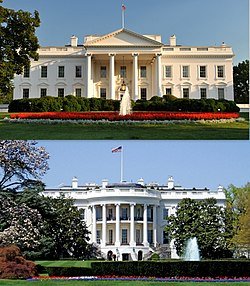Historical Context and Significance of the Indo-Pacific Economic Framework (IPEF)
The Indo-Pacific Economic Framework (IPEF), launched on May 23rd, 2022, represents a significant milestone in global economic strategy. The backdrop to its formation is rooted in the evolving geopolitical and economic dynamics of the Asia-Pacific region. Over the past few decades, this region has emerged as a critical arena for economic growth and strategic competition, particularly with the rise of China as a dominant player. The United States, along with key regional partners such as India, South Korea, and Japan, has sought to counterbalance China’s growing influence through collaborative economic and strategic initiatives.
The inception of the IPEF can be traced to these broader geopolitical trends. The framework aims to foster greater economic cooperation and integration among its member states, thereby enhancing their collective resilience against external economic pressures. Historically, the Asia-Pacific region has been characterized by a series of bilateral and multilateral agreements, such as the Trans-Pacific Partnership (TPP) and the Regional Comprehensive Economic Partnership (RCEP). While these agreements have facilitated trade and investment, they have also underscored the need for a more inclusive and strategic economic alliance that addresses contemporary challenges.
On May 23rd, 2022, U.S. President Joe Biden, alongside leaders from India, South Korea, Japan, and other regional partners, officially launched the IPEF in Tokyo. This event marked a pivotal moment in international relations, reflecting a concerted effort to establish a comprehensive economic framework that promotes shared values and mutual interests. The motivations behind the IPEF are multifaceted. They include the desire to ensure a free and open Indo-Pacific region, strengthen supply chain resilience, and advance digital trade and infrastructure development.
The diplomatic efforts leading up to the launch of the IPEF involved extensive negotiations and strategic dialogues among the participating countries. These efforts were driven by the recognition that a united front is essential to navigate the complexities of the current global economic landscape. The anticipated impacts of the IPEF on international relations are profound. By fostering closer economic ties and enhancing regional cooperation, the framework is expected to contribute to stability and prosperity in the Indo-Pacific region.
Key Areas of Focus and Strategic Goals of the IPEF
The Indo-Pacific Economic Framework (IPEF), launched on May 23, 2022, represents a significant endeavor aimed at fostering economic growth and stability within the region. The framework’s primary focus areas include trade facilitation, supply chain resilience, and digital commerce, each of which plays a crucial role in enhancing economic cooperation among member nations.
One of the core objectives of the IPEF is to streamline trade processes, thereby reducing barriers and improving market access. Trade facilitation efforts under the framework are designed to simplify customs procedures, harmonize standards, and eliminate non-tariff barriers. By leveraging advanced technologies and best practices, the IPEF aims to create a more efficient and transparent trading environment, which is expected to significantly boost intra-regional trade.
Supply chain resilience is another critical focus area. The COVID-19 pandemic underscored the vulnerabilities within global supply chains, prompting the need for a more robust and adaptable system. The IPEF proposes initiatives to diversify supply sources, enhance logistical infrastructure, and promote the adoption of resilient practices. By fostering collaboration among member states, the framework seeks to mitigate risks and ensure the continuity of essential goods and services, thereby safeguarding economic stability.
In the realm of digital commerce, the IPEF aims to harness the transformative power of digital technologies to drive economic integration. This includes establishing frameworks for data governance, cybersecurity, and cross-border data flows. By promoting a conducive digital ecosystem, the IPEF intends to facilitate innovation, enhance the competitiveness of businesses, and create new economic opportunities for the region.
The IPEF also outlines specific policies and initiatives to achieve these objectives. For instance, the framework advocates for the creation of a regional digital trade agreement that would set common standards for digital transactions and intellectual property protections. Additionally, it supports capacity-building programs to help member countries adopt best practices in supply chain management and trade facilitation.
While the potential benefits of the IPEF are substantial, the framework also faces challenges. These include aligning the diverse economic interests of member nations, addressing regulatory disparities, and ensuring the equitable distribution of benefits. Expert opinions suggest that sustained political will, effective coordination, and inclusive policymaking will be essential to overcoming these hurdles.
Overall, the launch of the Indo-Pacific Economic Framework on May 23, 2022, marks a strategic move towards greater economic integration and cooperation in the region. By focusing on key areas such as trade facilitation, supply chain resilience, and digital commerce, the IPEF aims to build a more interconnected and resilient economic landscape for the Indo-Pacific.

